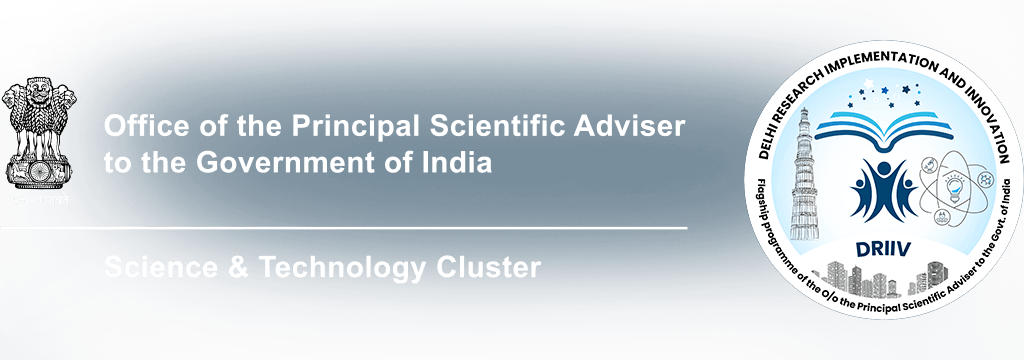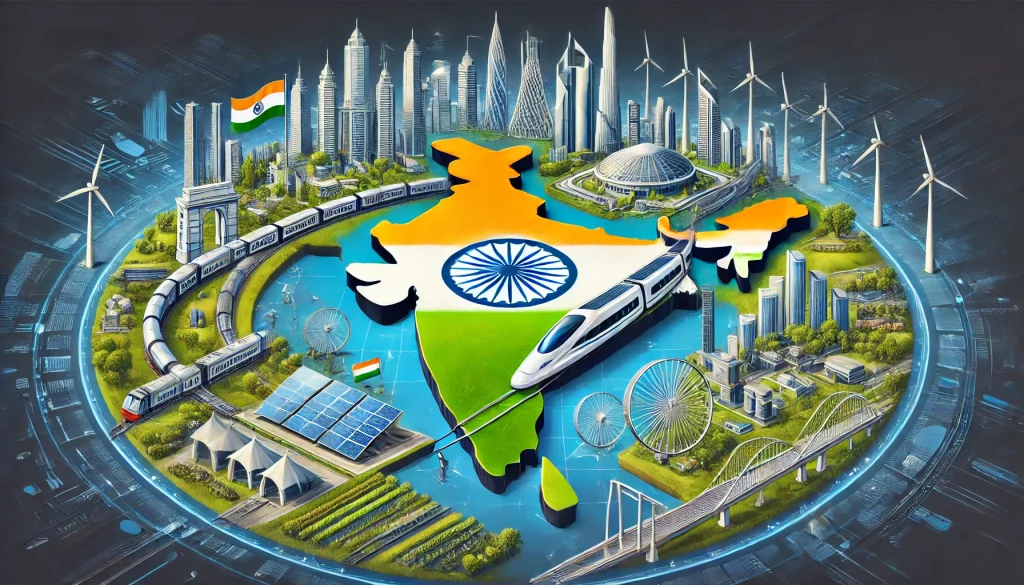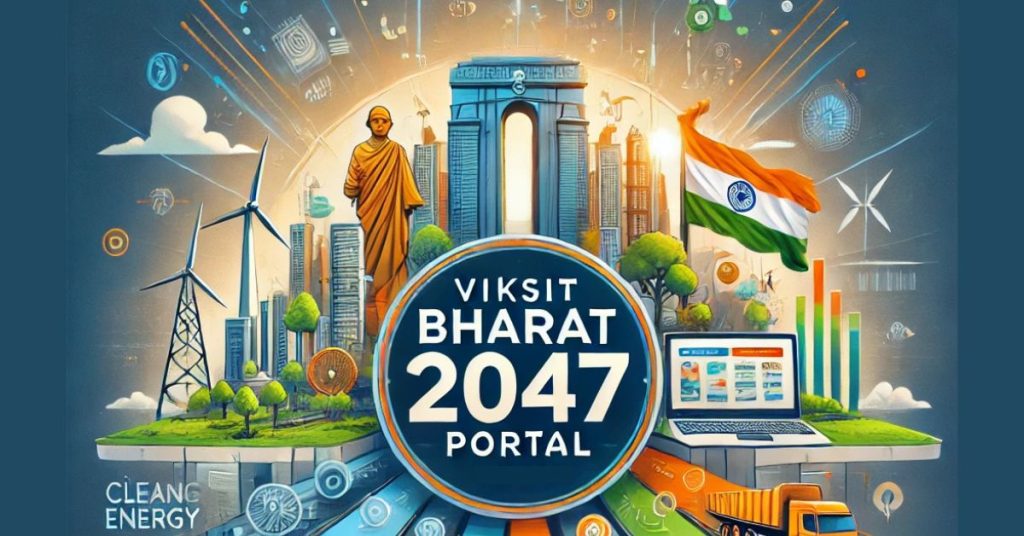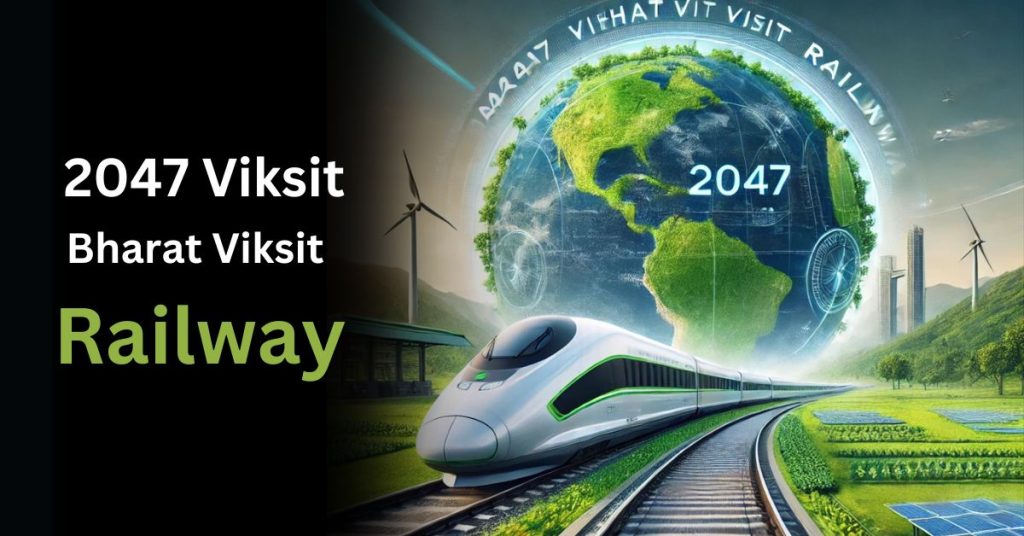India is moving towards becoming a developed nation, and the vision for this transformation is called Viksit Bharat 2047. The goal is to make India a strong, self-reliant, and prosperous country by the year 2047, which marks 100 years of India’s independence.
This vision is not just about economic growth. It is about making life better for all Indians by improving education, healthcare, employment, infrastructure, and technology. It also focuses on sustainability, ensuring that development does not harm the environment.
To achieve this, India must work on multiple areas, including creating more jobs, improving industries, and building better roads, railways, and digital networks. It will also require reforms in governance, education, and healthcare. With proper planning and the participation of citizens, businesses, and the government, Viksit Bharat 2047 can become a reality.
What is Viksit Bharat 2047?
Viksit Bharat 2047 is a vision of making India a developed country by improving various sectors like the economy, infrastructure, education, and healthcare. A developed India will have:
- A strong economy with high employment opportunities.
- World-class roads, railways, airports, and digital networks.
- An excellent education system for all.
- A healthcare system that provides quality treatment to every citizen.
- Advanced industries and technological innovations.
- A clean and green environment with sustainable energy sources.
This vision is about making India a place where people live happily, get good jobs, and enjoy a high standard of living. It aims to bring growth to every part of the country, including rural areas.
Key Focus Areas of Viksit Bharat 2047
Economic Growth and Job Creation
For India to be a developed nation, its economy needs to grow at a fast pace. The government is working to make India one of the largest economies in the world by 2047. The focus is on boosting industries, encouraging new businesses, and increasing exports.
To achieve this, India is promoting Make in India, which encourages companies to manufacture goods within the country. This will not only reduce dependence on imports but also create more jobs.
Another important aspect is startups. Many young entrepreneurs are starting businesses in various fields, from technology to agriculture. The government is supporting them through various schemes, helping them succeed and generate employment.
To ensure that people are ready for new job opportunities, skill development programs are being expanded. These programs will help workers gain the knowledge and expertise required for modern industries.
Infrastructure Development
Infrastructure plays a key role in the development of any country. India is working to build better roads, highways, railways, and airports to connect cities and villages efficiently. Projects like Bharatmala and Sagarmala focus on improving transportation and making travel faster and more convenient.
By 2047, India aims to have:
- Modern metro networks in all major cities.
- Bullet trains for high-speed travel.
- Well-planned cities with clean water and sanitation facilities.
- Smart villages with internet access and modern infrastructure.
The goal is to make daily life easier and boost business and trade by reducing travel and transportation costs.
Read: Viksit Bharat 2047 Portal
Education and Innovation
A country can only develop if its people are well-educated. The government is working to improve education from primary schools to universities. Schools are being equipped with modern technology, and teachers are being trained to provide better education.
The focus is on making learning more practical and skill-based. New education policies are being introduced to ensure students learn useful skills that help them get jobs.
Research and innovation are also being encouraged. India has already achieved success in space research with ISRO’s missions, and by 2047, it aims to be a leader in science and technology. The government is investing in fields like artificial intelligence, robotics, and biotechnology to make India a global innovation hub.
Healthcare for All
A developed country must have a strong healthcare system where everyone can access quality medical services. The Indian government is working to make healthcare affordable and accessible for all, especially the poor.
Programs like Ayushman Bharat provide free medical treatment to millions of Indians. However, more hospitals and healthcare centers need to be built, and more doctors and nurses need to be trained.
Preventive healthcare is also a focus. The government is promoting vaccination programs, better nutrition, and awareness campaigns to prevent diseases before they occur.
By 2047, India aims to have a world-class healthcare system where no one has to suffer due to a lack of medical facilities.
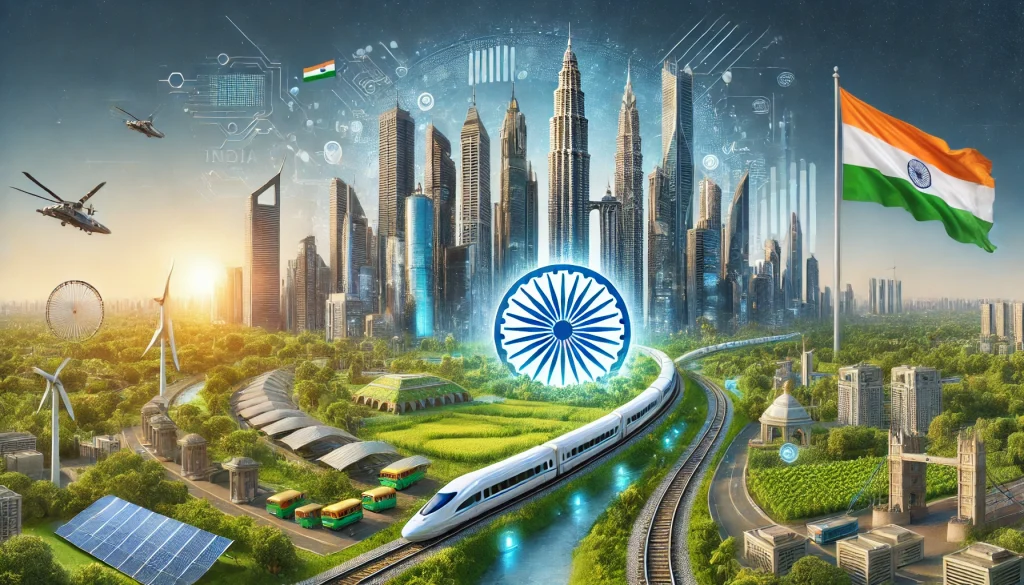
Technology and Digital India
Technology is shaping the future, and India is making great progress in this field. The Digital India initiative has already made government services, banking, and education more accessible through the internet. By expanding internet connectivity to rural areas, India is ensuring that technology benefits everyone.
India is also investing in:
- Artificial Intelligence and robotics.
- Space technology and satellite development.
- Cybersecurity to protect digital data.
By 2047, India aims to be one of the top countries in technological advancements, making daily life easier and businesses more efficient.
Environmental Sustainability
Development should not come at the cost of nature. India is taking steps to protect the environment while growing its economy. The focus is on:
- Using renewable energy sources like solar and wind power.
- Promoting electric vehicles to reduce pollution.
- Improving waste management and water conservation.
The National Solar Mission is helping India shift towards clean energy, reducing dependence on fossil fuels. By 2047, India aims to be a leader in sustainable development, balancing growth with environmental protection.
Challenges in Achieving Viksit Bharat 2047
While the vision is promising, there are challenges that need to be addressed:
- Population Growth: With a large population, India must ensure enough resources, jobs, and infrastructure for everyone.
- Corruption: Transparent governance is necessary to implement policies effectively.
- Education and Skills: Many people still lack access to quality education and job skills.
- Environmental Issues: Pollution and climate change need urgent attention.
Overcoming these challenges will require strong leadership, public participation, and efficient use of resources.
The Role of Citizens in Viksit Bharat 2047
The success of Viksit Bharat 2047 depends not only on the government but also on the efforts of every Indian citizen. Here’s how people can contribute:
- Education: Parents should ensure their children get a good education, and students should focus on learning new skills.
- Entrepreneurship: Young people should take advantage of startup opportunities and create jobs.
- Environmental Responsibility: Everyone should work towards a cleaner and greener India by reducing waste and using sustainable products.
- Digital Awareness: People should use digital services responsibly and stay informed about technological changes.
When citizens actively participate, the journey to a developed India becomes much smoother.
Conclusion
Viksit Bharat 2047 is a dream of a strong, modern, and self-reliant India. The goal is to ensure that every Indian has a good quality of life with access to education, healthcare, jobs, and modern infrastructure.
With the right policies, investments, and efforts from citizens, India can achieve this vision. The journey is long, but with determination, India can become a global leader by 2047.
By working together, we can make Viksit Bharat 2047 a reality and build a better future for the coming generations. Let’s take a step forward and contribute to the development of our nation!
Frequently Asked Questions
What is the goal of Viksit Bharat 2047?
Viksit Bharat 2047 aims to make India a developed country by 2047. It focuses on economic growth, modern infrastructure, quality education, better healthcare, and environmental sustainability. The vision is to improve the quality of life for all Indians and make the country self-reliant and globally competitive.
How will Viksit Bharat 2047 improve the economy?
The government is boosting industries, promoting Make in India, and supporting startups to create jobs. Digitalization, infrastructure development, and skill training programs will strengthen the economy. By encouraging innovation and increasing exports, India aims to become one of the world’s largest economies by 2047.
What role does infrastructure play in this vision?
Infrastructure development is key to progress. India is building better roads, railways, airports, and digital networks to improve connectivity. Smart cities, clean energy projects, and efficient public transport systems will make life easier, support businesses, and drive economic growth across urban and rural areas.
How will education contribute to Viksit Bharat 2047?
A well-educated population is essential for national growth. The government is improving schools, colleges, and skill-based learning. New education policies focus on digital learning, research, and job-oriented skills to prepare students for future industries and create a knowledgeable workforce for a developed India.
What steps are being taken to improve healthcare?
The government is building more hospitals, training medical staff, and expanding health insurance programs like Ayushman Bharat. It also focuses on preventive care, vaccination programs, and affordable medicines to ensure every citizen gets quality healthcare without financial burden.
How will technology help in India’s development?
Technology is key to modernization. India is investing in artificial intelligence, robotics, space research, and cybersecurity. The Digital India initiative is expanding internet access and making government services online, helping businesses grow and making daily life more convenient for citizens.
How will the environment be protected in Viksit Bharat?
The vision includes sustainable development. India is promoting renewable energy like solar and wind power, encouraging electric vehicles, and improving waste management. Afforestation and clean water projects will help maintain ecological balance while supporting economic growth without harming nature.
What are the major challenges in achieving this vision?
Challenges include managing population growth, improving education and skills, reducing corruption, and ensuring economic stability. Environmental issues, like pollution and climate change, also need attention. Overcoming these obstacles requires strong leadership, responsible governance, and active participation from citizens.
How can citizens contribute to Viksit Bharat 2047?
Citizens play a crucial role by focusing on education, supporting startups, using eco-friendly practices, and participating in digital transformation. Being responsible taxpayers, following laws, and working towards community development can help India achieve its vision of becoming a developed nation.
What benefits will Viksit Bharat 2047 bring to people?
People will enjoy better jobs, improved healthcare, modern cities, and a higher standard of living. A strong economy will provide financial stability, while better education and technology will create opportunities. A cleaner environment and better public services will make life more comfortable for future generations.
